I have reviewed a lot of odd shows recently. From Paranoia Agent to Serial Experiments Lain, they each had their own… je ne sais quoi, their own unique flavor. Keeping with that trend is Mononoke, a sort of Horror Anthology reminiscent of Tales From the Crypt or a Stephen King short stories collection. Though where those went for a more classic sort of horror, Mononoke aims more for a permeated dread. Working to bring horror from the actions of man, but basing it on traditional Japanese monsters. Like a sort of mix between Stephen King and Mushishi. Little jump-scare horror, with more slow built environmental and naturalist horror. How’s that for a sentence you thought you would never read, eh? Made by Toei, directed by Kenji Nakamura and spun-off from the final arc of Ayakashi: Japanese Classic Horror, I believe Mononoke succeeds at just that.
So without further ado, let’s dive in. And make sure to stick around until the end to find out what series will next be featured on Throwback Thursday!
(Disclaimer: This review contains spoilers. Also, I am working to make 50 the new “average”. 70 is not an average score people. 70 is above average. Carry on.)
Animation/Art
Starting off, as always with an animated series, we have to talk about Mononoke’s art and animation. Of all the anime I have reviewed recently, Mononoke without a doubt has my favorite style. Reminiscent of Gankutsuou in a way, Mononoke seems to have a filter placed over the whole thing. Depicting the series as if it were on wrinkled paper. Giving every scene a sort of texture you rarely see in modern anime’s generally clean art. For me, I love this sort of thing, I love introduced imperfections. In some cases, like the recent Kimetsu no Yaiba, you introduce those imperfections via inconsistent or thicker line work. Mononoke adds the imperfections though with this filter, among many of things of course. Such as the Art Nouveau/Japanese woodblock print style of Gankutsuou. Or playing with color in a scene, changing the filter based on what is happening.
Simply put, across the board Mononoke has a very strong and distinct visual style. One that sets it apart from most anime and makes it instantly recognizable. You could take any shot from Mononoke, any scene, and it’s almost guaranteed someone identifies the series correctly, because of how memorable the style is. Of course this isn’t to say Mononoke limits itself here either. As the series regularly shifts its art for different scenes. Doing its best to depict each one in a unique manner or style best suited for it. It’s not quite as large a shift as you may see in say, Mob Psycho 100 with the various mixed media. However often times it will shift to impressionist art, or remove a lot of detail for the sake of making a point. Once restricting an entire scene to just 2 colors. All for the sake of the scene.
Sadly though, moving on to animation, Mononoke doesn’t do as well. It doesn’t do badly of course, Mononoke is not an action Shounen, it isn’t reliant on high fidelity animation. The series gets by with its limited style, relying on its art to see it through. And while it largely does, at the end of each arc and occasionally outside that, this lack of fidelity really hamstrings it. Such as the final sequences of the exorcisms, the bright colors and style can sometimes make it hard to follow or just sore on the eyes. And when neither of those are an issue, the animation itself just isn’t particularly impressive. This is a series that could have, and in some parts did, survive as a literal PowerPoint presentation. But by god, was it a PowerPoint presentation with style.
Direction
Moving on, we come to what I believe is Mononoke’s strongest aspect, that being its Direction. How the series actually uses its interesting art style and minimal animation. There are so many different techniques and unique styles used throughout the series, it’s almost easier to just focus in on a specific example I loved the most. That being in the 4th arc, Nue, where the primary focus becomes color. As director Kenji Nakamura adds and removes color throughout the arc to represent the feelings of the characters in it. Restoring them to color the more alive they feel, the stronger their emotions, etc etc. With only our lead, the enigmatic Medicine Seller, being fully and brightly colored throughout the entire arc. All of this left up to the viewer to interpret the details, while the core meaning instinctually gets across.
This isn’t to say it’s perfect of course, in the last arc particularly I think Mononoke goes overboard. Really slamming the surrealist images at you one after another. Like a freight-train of bright lights and sounds. In a way, it fits the scene, the resolution of the arc. However for me personally, it came off rather strong. Especially with how subtle and slow the rest of Mononoke had been. This also happens during some of the arcs’ finales. Where once again, while the imagery fits, it becomes a bit much and I found them difficult to enjoy at times. So to make a long story short, Mononoke is brilliantly directed. However at times it comes off rather heavy-handed with it all, really trying to make sure you get what is happening rather than relying on the intelligence of its viewer.
Sound Design
Next up is the Sound Design of Mononoke, which includes the voice work and the OST throughout. The first two are rather easy to answer. For as far as VA work goes, there is really only one consistent character, that being the Medicine Seller. For the most part, Takahiro Sakurai does as fine a job as can be expected here, considering how deadpan the character is. Often taking every arc with quiet stoicism, accompanied by some dry wit, only really changing this during the arc finales. While none of it is particularly expressive, the performance is solid and consistent. This goes for most of the cast of Mononoke. None of them really stood out to me as particularly memorable. They worked for the scene, for the arc, they got across what needed to be presented. But none truly “wowed” me.
The OST though is a different story, because I quite enjoyed Mononoke’s soundtrack. It does more for the arcs and scenes throughout the series than the voice work ever could. With multiple tracks sticking out to me, etching themselves in my mind. For instance, Samishige always comes to mind when I think of Mononoke, the somber, sad, soft strings echoing through my headphones. Fading out only to be replaced with haunting vocals. Or Oboroge’s similar, yet more oppressive strings building a feeling of dread. Both are similarly structured, as is the entirety of Mononoke’s OST. Yet each takes this familiar base structure and modifies the pitch/tone ever so slightly for a completely different effect. You need only look at the various Sami/Isama/Aya/Kuru -shige tracks for this. Each one has a similar, yet varied drum beat evoking ever so slightly different feelings. Yasuharu Takanashi did a great job.
Story/World
With production out of the way, I can finally get to the actual narrative structure of Mononoke. Ordinarily here I would split it into two sections, that being the overarching story, and the setting. However Mononoke is unique, even for episodic series, in that there really isn’t any set setting. With each arc being self-contained, taking place in a different location and even time period. The only constant being of course that it is set in Japan, and our lead character the Medicine Seller is present. However what makes it interesting is that while the Medicine Seller is present in every arc, he is rarely even the focus. With that honor being given to the monster, the human problem, of the week. So instead I want to focus on how Mononoke structures its arcs and whether or not it is successful with this structure.
Each arc in Mononoke follows the same basic structure. As our lead, the Medicine Seller, must find the Truth, Form and Regret behind each monster. In a way, this turns every arc into a sort of Mystery Horror, where we must learn about the monster in order to defeat it. Outside of the final arc though, the mystery is rarely ever the focus, more the vehicle Mononoke uses to progress. Each arc seems to explore a different aspect of humanity and what it means to be human, through the lens of the associated monster. Most often though, Mononoke likes to tackle the idea of perception, how we view the world and what changes as our perception does. Whether that be how we view ourselves and our surroundings, or how we give value to objects with no inherent value of their own, or for the wrong reasons.
For me, I would say Mononoke never had a bad arc. I enjoyed each of them in their own way, for different reasons, however some are more my style than others. In a way, it’s similar to the Monogatari series, in that each person will no doubt find their own favorite arc. Each one resonating and connecting with a person differently based on that person’s own life and personality. For example, in terms of theme, my favorite arc was the Noppera-bo, the 3rd arc. Where Mononoke tells the story of a woman trapped in an abusive household, unable to leave because of social constraints and her own perception of the house. In this arc, the mononoke is almost irrelevant in a way because it is Ochou, the wife, who is the central focus and not the traditional ghost story. It’s a very unique take for a very unique series.
Themes/Horror
Finally, we get to what may be the most important part for a series like Mononoke: the themes present throughout, and how well it executes the horror elements. As far as themes go, a lot of this was discussed during the previous section. Mononoke bases each of its arc on some simple thematic, human through line. Whether that be the fear of Parenthood, Guilt, Perception, Greed or Betrayal, Mononoke doesn’t shy away from the darker tones present in humanity. Really driving home how terrible we as a species can be sometimes, through the use of the mononoke. But while each arc is pretty grim in its own right, there is always this sort of positive through line, mostly seen at the end. Where these demons are dealt with, where if we can confront and get past these, we can grow as people. Leading to a rather hopeful overarching tone throughout.
As far as the horror goes, this is where our mileage may vary, as how I interpret and am affected by horror will no doubt be different from you. It’s very rare that Mononoke goes for full blown shock horror, like we see in modern movies. It usually attempts a more creeping dread that builds throughout the arc. And when it does finally explode, it does so in a very surrealist fashion. Heads coming out of walls, giant cat paws, that sort of thing. While none of it was traditionally “scary” though, a number of the scenes left a lasting impression on me, which I think is much more impressive. Especially with the bright color palette the series brings to the table. Showing horror with, rather than in spite of, its beautiful colors. The first arc alone will tell you all you need to know about Mononoke’s horror.
Conclusion
So how was Mononoke? To me, it is one of the most unique horror anthologies you will find out there. Both in terms of presentation and in terms of actual story structure. However, in terms of production, I think there is a fair bit more to be desired. As while the series has a unique style, Mononoke is often limited by it. Often confusing the viewer, or throwing so much at once that when combined with the bright color palette, it becomes difficult to tell what is going on. The animation as well, while inventive in places, is often rather simple and it’s not something you will be wowed by. Unlike an action Shounen though, this doesn’t kill Mononoke, because of how interesting its stories and themes are. So, if you want to be disturbed, moved to dread and asked uncomfortable questions, you can’t do much better than Mononoke.
With that, we have closed out another season of Throwback Thursday. Thank you to everyone who has followed along, and who has voted in the closing polls. Starting soon will be Neon Genesis Evangelion and its accompanying movie, End of Evangelion. And while Princess Tutu was close, personal/public interest and internal pressure really helped decide this one. This will be my first time watching either of these, and I have heard a lot about both. My fellow writers were surprised to hear I had never seen them before. There are some high expectations going in. I am simultaneously excited and terrified, because I know if I don’t enjoy it, I will be inviting riots. Still, outrage media is how you are supposed to get people to your site in the modern day, right? Thank you for reading, and I will see you soon, for Hideaki Anno’s master work.

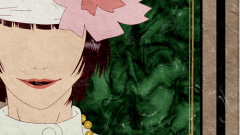
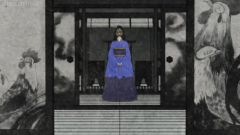
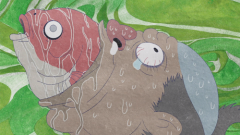
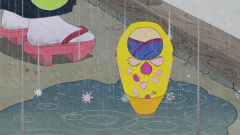
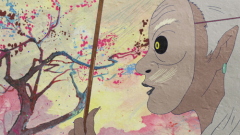
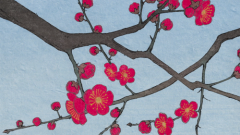






The OST for mononoke is really good. Reminds of ping pong, although I’d say ping pong is better.
Other than that, look forward to seeing your evangelion writeups. Its definitely an anime with plenty of room for analysis.
Ping Pong is fantastic to yeah. Its also my favorite anime of all time. So you don’t need to convince me of anything there, haha.
You should do “Welcome to Irabu’s Office” (空中ブランコ Kuuchuu Buranko) next – if you haven’t seen it.
Sh*t – I just realised that psgels already reviewed that one.
Ill add it to the list and put it on the poll for next time!
I’m putting this to my watch list. Have great expectations.
This is one of the most beautiful and amazing anime series I’ve ever watched & im a die hard anime fan who’s watched easily 1000+ series & movies over the years. The recent movie is even more stunning. I consider them works of art on par with Ghibli Studio’s work. Simply outstanding 1/10